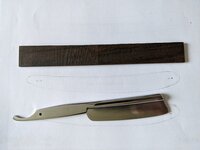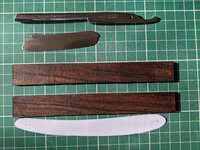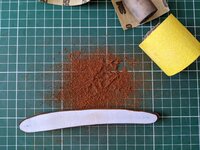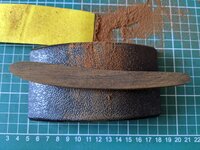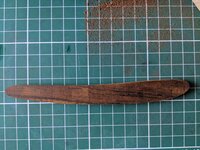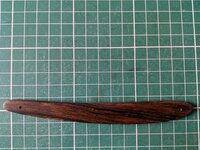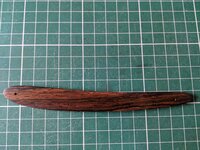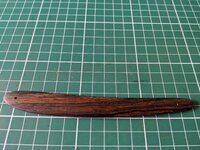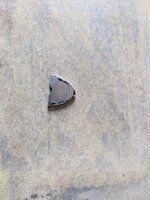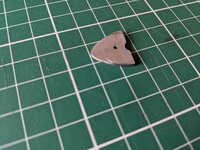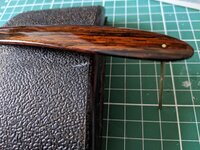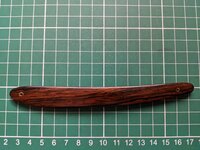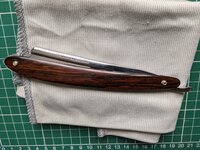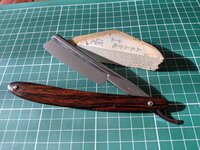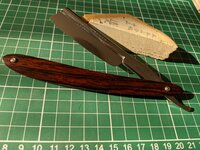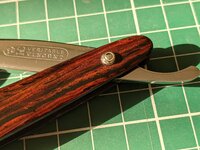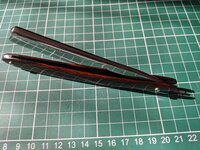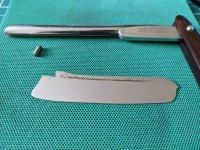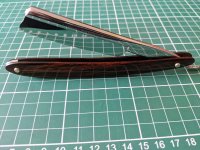Been kinda quite around here recently so I thought I'd restore another of my French razors.
This one came as just the blade so I'll need to make scales for it.
It's seen better times and I'd imagine it's been sitting around for decades in this condition.
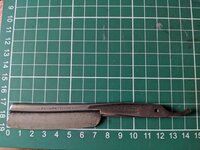
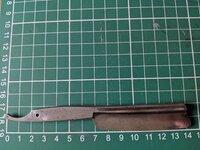
First of all this thing was so frozen into the frame it took me a couple of weeks of on off trying to get the blade out. It has the traditional screw holding the blade in place but after removing that the blade was so tight I had begun to wonder if it was somehow not a real frameback, that's how tight it was. Easing oil and various leverage techniques did nothing and I was afraid I was going to damage it so I almost gave up.
As the bade itself is flat I thought I'd put it in a clamp and try that way. A screw driver into the hole where the screw was seemed like the logical approach until I realised it could damage the screw threads and mark the frame.
Plan B. Still in clamp, protected by tissue, I tried to leverage the blade out using the tang but this isn't how these are supposed to come apart and again I feared damaging it.
Plan C. I put the blade the whole way into the clamp so it bottomed out at the frame. This might sound like a logical next step but you have to remember the blade is flat so you can't tighten the clamp at all or nothing will happen. I got a pliers and, as the blade was loose in the clamp, I had to hold the tang as I applied pressure to a small portion of the blade poking out the end. This got it to budge a fraction of a mm but it took a very long time to ease it out of the frame.
The couple of weeks just to get the thing apart was an ominous omen for how the rest of this restoration would go but I was off and nothing was going to stop me now.
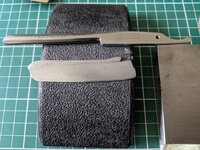
I've known French steel can be ridiculously hard but the blade on this thing must be made out of an unknown element as no matter how much I sanded the pitting remained. Again this became an on off project as I burned through sand paper without getting much done.
After a long time I got it to a stage where I started to think about scales.
I thought Wood would go well with an old French piece like this.
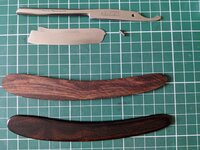
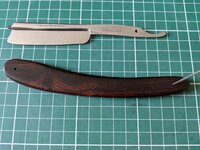
A wedge would be cut from an old key
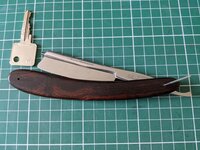
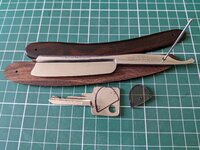
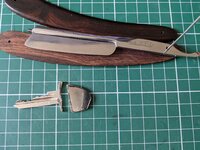
Next problem. The scales were a fraction too long for the razor.
Too big for the razor, too short to reduce the scales down and reposition the pin holes to a point where they'd look good.
Ugh, These scales will have to be used for something else.
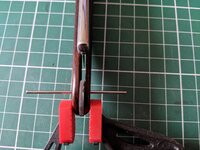
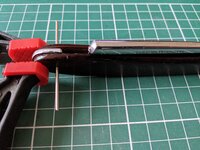
This one came as just the blade so I'll need to make scales for it.
It's seen better times and I'd imagine it's been sitting around for decades in this condition.


First of all this thing was so frozen into the frame it took me a couple of weeks of on off trying to get the blade out. It has the traditional screw holding the blade in place but after removing that the blade was so tight I had begun to wonder if it was somehow not a real frameback, that's how tight it was. Easing oil and various leverage techniques did nothing and I was afraid I was going to damage it so I almost gave up.
As the bade itself is flat I thought I'd put it in a clamp and try that way. A screw driver into the hole where the screw was seemed like the logical approach until I realised it could damage the screw threads and mark the frame.
Plan B. Still in clamp, protected by tissue, I tried to leverage the blade out using the tang but this isn't how these are supposed to come apart and again I feared damaging it.
Plan C. I put the blade the whole way into the clamp so it bottomed out at the frame. This might sound like a logical next step but you have to remember the blade is flat so you can't tighten the clamp at all or nothing will happen. I got a pliers and, as the blade was loose in the clamp, I had to hold the tang as I applied pressure to a small portion of the blade poking out the end. This got it to budge a fraction of a mm but it took a very long time to ease it out of the frame.
The couple of weeks just to get the thing apart was an ominous omen for how the rest of this restoration would go but I was off and nothing was going to stop me now.

I've known French steel can be ridiculously hard but the blade on this thing must be made out of an unknown element as no matter how much I sanded the pitting remained. Again this became an on off project as I burned through sand paper without getting much done.
After a long time I got it to a stage where I started to think about scales.
I thought Wood would go well with an old French piece like this.


A wedge would be cut from an old key



Next problem. The scales were a fraction too long for the razor.
Too big for the razor, too short to reduce the scales down and reposition the pin holes to a point where they'd look good.
Ugh, These scales will have to be used for something else.


